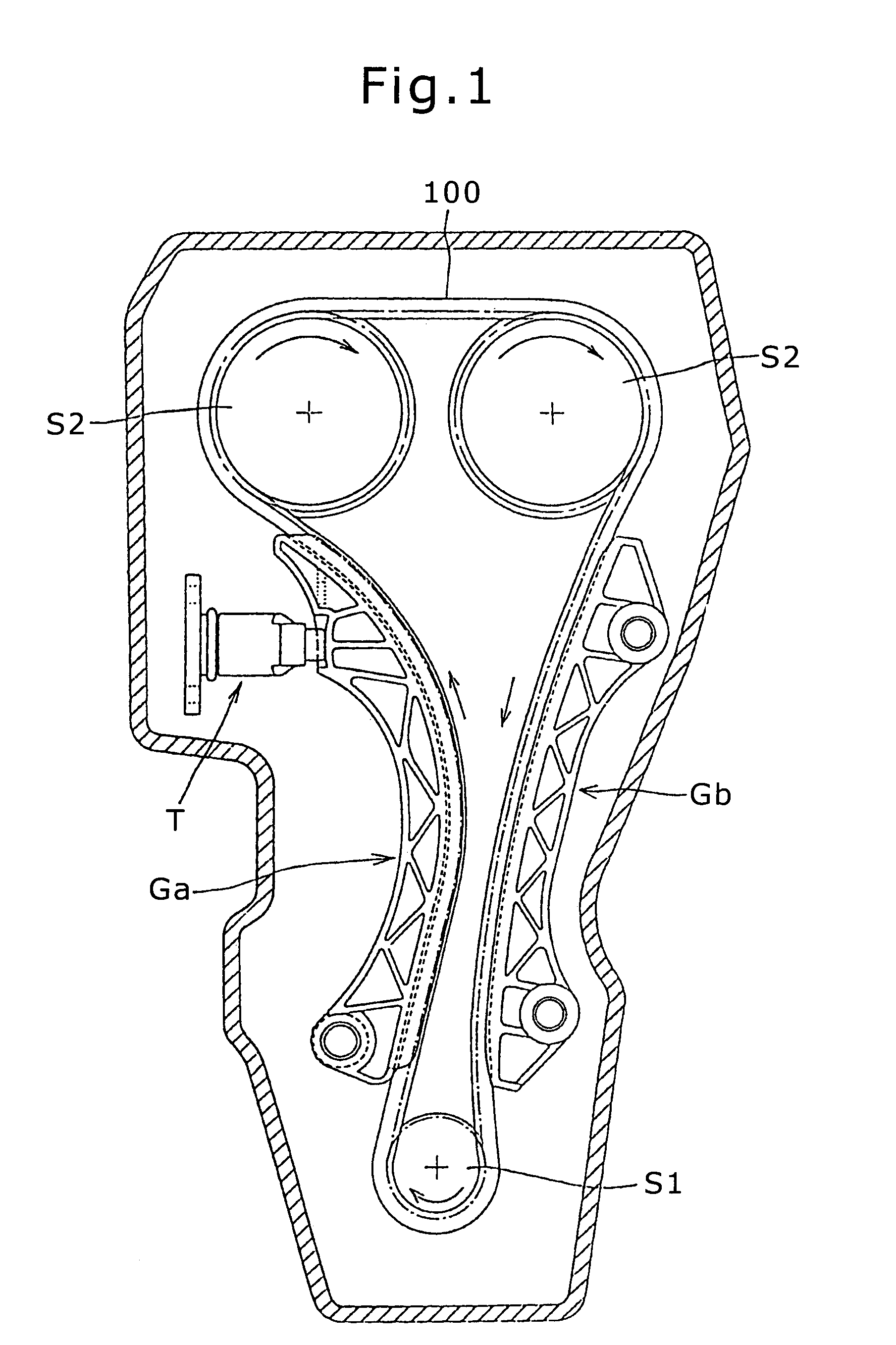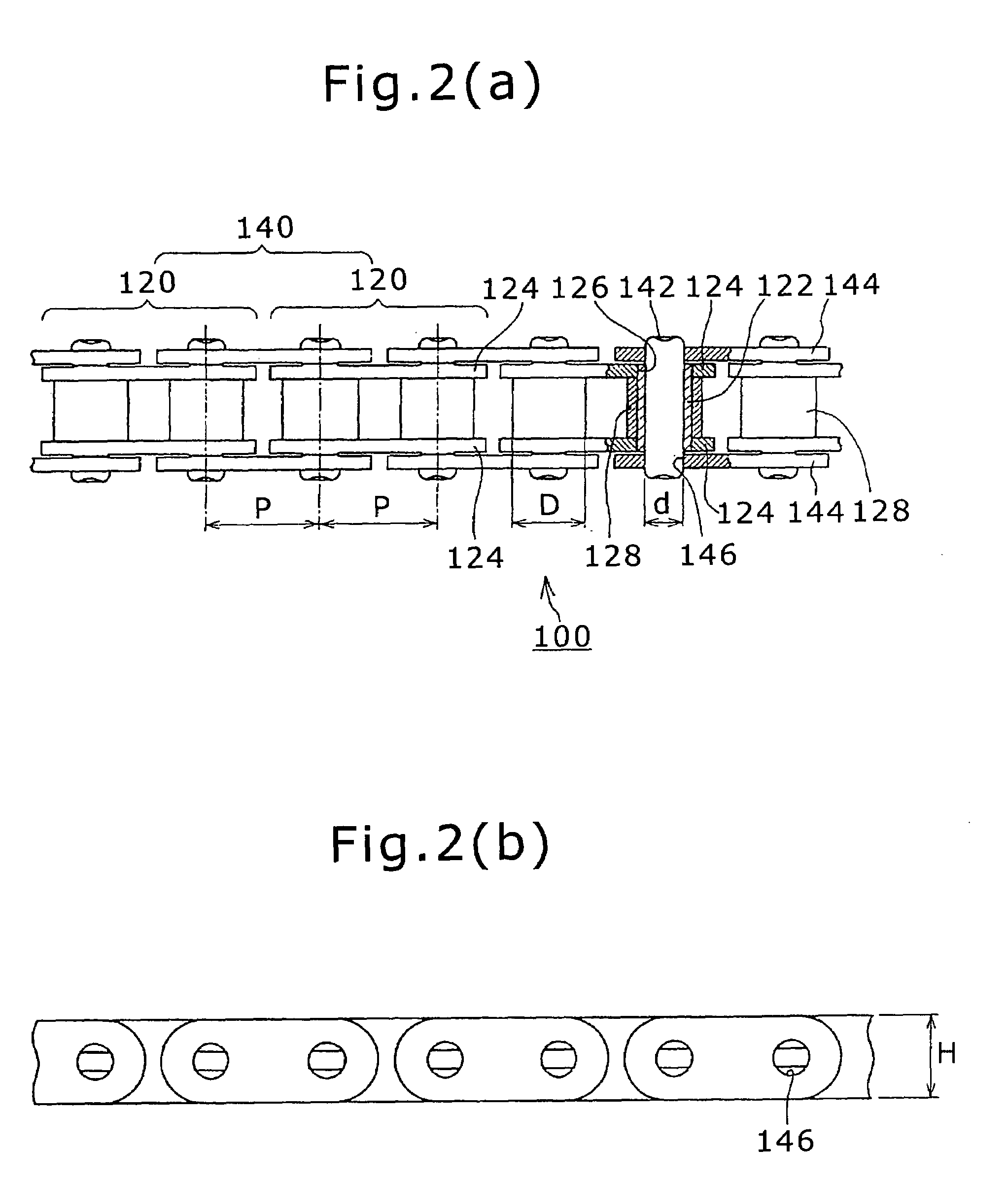Roller chain transmission device
a technology of transmission device and roller chain, which is applied in the direction of belt/chain/gearing, chain elements, chain elements, etc., can solve the problems of reducing the diameter of the pin, and reducing so as to reduce the strength of the chain, increase the diameter, and enhance the strength of the pin
- Summary
- Abstract
- Description
- Claims
- Application Information
AI Technical Summary
Benefits of technology
Problems solved by technology
Method used
Image
Examples
Embodiment Construction
[0026]In the transmission shown in FIG. 1 a roller chain 100 is in mesh with a driving sprocket S1 on a crankshaft (not shown) and a pair of driven camshaft sprockets S2. A movable guide Ga cooperating with a tensioner T is in sliding contact with the chain 100 and imparts tension to the chain. A fixed guide Gb regulates the traveling path of the chain 100.
[0027]As shown in FIGS. 2(a) and 2(b), the roller chain 100 comprises inner links 120 having cylindrical bushings 122, and inner plates 124, with bushing holes 126, in which the opposite ends the bushings 122 are secured. Rollers 128 are rotatable on the bushings 122. Outer links 140 are composed of outer plates 144 and pins 142. The outer plates 144 are disposed on the outsides of the pairs of inner plates 124 in overlapping relationship. The pins 142 extend rotatably through the bushings, and have both ends secured in pin holes 146 in the outer plates 144.
[0028]The sizes of the respective elements are selected so that the outer ...
PUM
 Login to View More
Login to View More Abstract
Description
Claims
Application Information
 Login to View More
Login to View More - R&D
- Intellectual Property
- Life Sciences
- Materials
- Tech Scout
- Unparalleled Data Quality
- Higher Quality Content
- 60% Fewer Hallucinations
Browse by: Latest US Patents, China's latest patents, Technical Efficacy Thesaurus, Application Domain, Technology Topic, Popular Technical Reports.
© 2025 PatSnap. All rights reserved.Legal|Privacy policy|Modern Slavery Act Transparency Statement|Sitemap|About US| Contact US: help@patsnap.com



